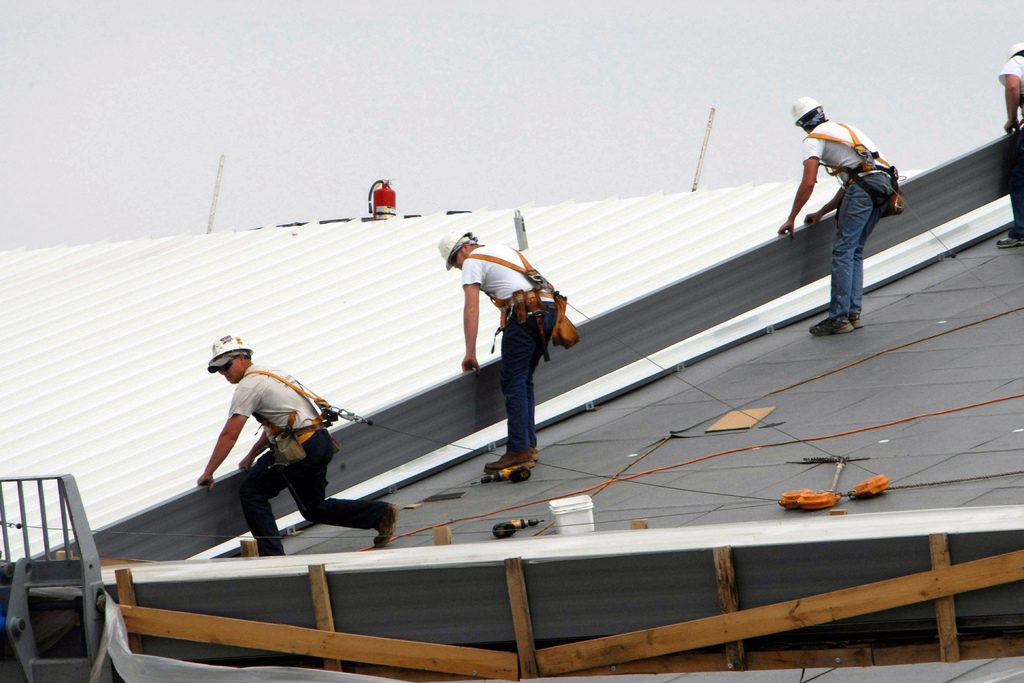Exactly How to Evaluate Different Roof Covering Alternatives for Your Structure Demands
Assessing roofing alternatives for your building requires a comprehensive strategy that takes into consideration various variables such as the planned use of the framework, regional environment problems, and material attributes - Toledo Roofer. It is essential to evaluate the benefits and downsides of different roof covering types, from asphalt shingles to metal and clay floor tiles, while additionally factoring in first expenses and lasting maintenance.
Evaluating Your Building's Requirements
To efficiently assess roof alternatives, start by extensively evaluating your building's demands. Start by taking into consideration the building's meant use, as various structures may require differing roof covering specs. Domestic roofings often focus on looks and insulation, while business structures might concentrate on resilience and load-bearing capability.
Following, review the regional climate conditions that will certainly influence roof performance. Elements such as temperature fluctuations, rainfall degrees, and wind patterns can affect material selection and layout. A roof that masters a temperate environment might not execute as well in locations vulnerable to hefty snowfall or severe warmth.
Additionally, evaluate the architectural stability of your structure. Guarantee that the existing structure can support the chosen roof materials, specifically if thinking about much heavier options. It is likewise essential to examine any kind of regional building regulations or policies that might dictate details demands for roofing systems.

Contrasting Roof Covering Products
Once a detailed analysis of your building's demands has actually been completed, the following action entails comparing numerous roof materials. Each material offers unique advantages and drawbacks, making it vital to align your option with your particular requirements and circumstances.
Asphalt shingles are widely recognized for their affordability and ease of installation, making them a popular option for residential structures. On the other hand, metal roof, recognized for its longevity and long life, can hold up against extreme climate condition but might come with a higher first financial investment.
Clay and concrete tiles provide outstanding thermal insulation and aesthetic charm, especially for Mediterranean-style design, yet they need a more durable architectural support because of their weight. Wood shakes offer an all-natural look and excellent insulation homes however may require much more upkeep and are at risk to fire dangers.
Reviewing Price and Budget Plan
Analyzing your roof covering choices necessitates a cautious analysis of expense and spending plan considerations. The total budget plan for a roof covering job comprises a number of aspects, including material prices, labor expenditures, upkeep, and prospective long-term savings. It is vital to develop a clear spending plan prior to discovering specific roofing materials, as this will certainly lead the decision-making procedure and aid you stay clear of overspending.
Begin by obtaining quotes from numerous specialists to recognize labor prices in your region. Make sure that these estimates include all needed solutions, such as elimination of the old roof covering, installment, and any additional attributes, like insulation or ventilation enhancements - Toledo Roofer. Next off, examine the price of different roof products, thinking about both first installation prices and anticipated life-span

Recognizing Power Efficiency
Energy effectiveness plays a crucial role in the option of roof materials and systems, significantly affecting both energy usage and total comfort within a structure. An appropriate roofing system can enhance thermal performance, decreasing the requirement for heating and cooling down systems, which consequently decreases power expenses and lessens ecological influence.
When reviewing roofing choices, consider materials that mirror as opposed to absorb warmth. Light or reflective roof items can significantly decrease roofing system surface area temperature levels, bring about pop over to this web-site lower energy usage throughout warm months. Additionally, appropriate insulation and air flow are necessary to maximize the power efficiency of the whole roof. Insulation avoids heat transfer, while air flow reduces warmth buildup in the attic room room.
One more important aspect is the roofing system's long life and maintenance demands. Sturdy materials that need less constant substitute contribute to long-lasting energy financial savings. Furthermore, the energy performance of a roof can likewise be assessed through its conformity with established sustainability ratings such as ENERGY CELEBRITY or LEED.
Thinking About Aesthetic Allure
A roofing system's visual appeal considerably affects the general appearance of a building, enhancing its building style and enhancing aesthetic allure. Perrysburg Roofer. When examining roofing choices, it is necessary to think about exactly how the chosen material, shade, and style will certainly balance with the existing framework and area. A properly designed roof covering can boost also the most basic of structures, changing them right into visual centerpieces
Various roof covering materials supply numerous visual top qualities. Standard tiles may stimulate a timeless beauty, while steel roofing can present a modern, streamlined look. In addition, the color of the roofing material plays an essential function; lighter shades can make a structure appear more spacious, while darker tones may create a cozier setting.
Furthermore, building aspects, such as dormers and eaves, can boost the roofing's aesthetic influence. It is advisable to seek advice from with professional developers or architects to make certain the chosen roof covering alternative aligns with the general design intent. Ultimately, a roof must not just supply useful advantages however likewise contribute positively to the structure's aesthetic, mirroring the proprietor's taste and the personality of the surrounding atmosphere.
Final thought
